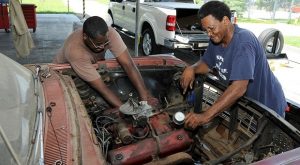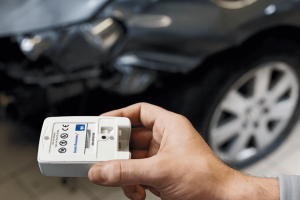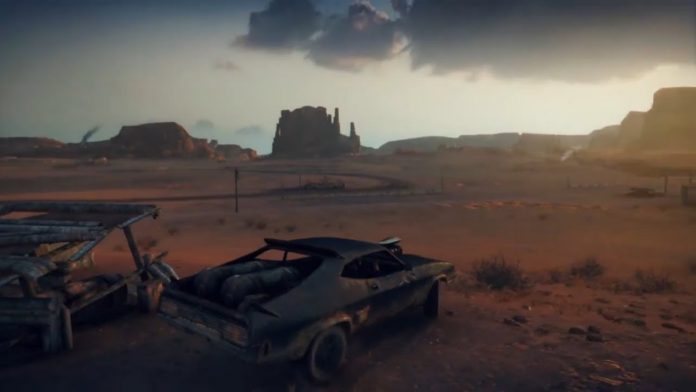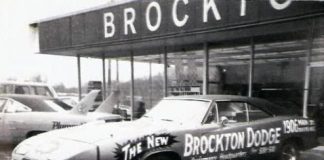It is far from a bad idea to consider buying an older car given the “new normal” descending. But – as with most things – there are downsides as well as upsides. Here’s a look at some of both:
Upsides –
You will probably own the old car, having paid cash for it. Not having to make payments – and make higher payments to the insurance mafia as well as to the government mafia (if you live in an area where ownership of a vehicle is perpetually taxed, like the home you thought you owned – to let you know who really owns both) is all by itself and no matter the “new normal” very sound policy. The less you have to spend, the less you have to work – which means less pressure on you when the government takes away your work in the name of the “new normal.”
You can probably do most of the necessary work yourself if it’s a really old car. The line separating the truly old vs. the new (even if also old) is roughly the year 1980. On the south side of that line you will find cars with purely mechanical fuel delivery systems (i.e., carburetors and mechanical fuel pumps, no ABS or traction control, etc.) and very basic electronic systems (i.e., their distributors/wiring) and – with a handful of exceptions – no computer controls of any kind. If you have a basic understanding of air/fuel/spark or are willing to learn and have a few basic tools, you can keep such a car running when it’s really important – the reason for italicizing necessary work – yourself, which is a plus in a “new normal” scenario. 
They will still usually run – and drive – even when something is wrong. A crude splice, some duct tape and bailing wire will often do the trick.
For example: Most old cars have separate belts for each belt-driven accessory – not a single serpentine belt for all of them, as almost all newer cars do. If that one belt breaks, everything no longer works. You don’t just lose the power steering. You also lose the charging (alternator) and the cooling (water pump) which will leave you stuck almost immediately.
With several belts, the loss of one won’t necessarily cripple you – and you can sometimes swap one that didn’t break for one that did. Which will get you home – or somewhere safe, also a desirable attribute in a “new normal” world in which you never know when you might run into some peaceful protestors. 
Essential parts are usually easy to find – or can be made. Or you can make use of what’s at hand. A huge plus in the “new normal.”
For example, an old car with a carburetor can be made to run with a carburetor from another old car – even if the carburetor is a different model – and from a different make/model/year of car. Parts can be swapped and made to work because with old cars, the drivetrain is not a computer-controlled integrated collective.
Old cars are under your control. Models made before the early ‘80s do not have black boxes or GPS receivers under the control of someone else. They cannot be shut off remotely – except by an EMP. Your travels cannot be monitored, unless someone put a “bug” under the fenderwell. They are free-range cars.
You will have to pay cash – in full – for the old car, probably – as it is hard to get financing for an old car unless it is a pristine condition/restored old car, which defeats the purpose of getting one as far as this discussion is concerned. And you’ll pay more to finance it – if you can finance it – because loans on older cars are higher-interest and shorter duration.
It won’t be as much cash, of course, as a new car would cost you – or at least, it doesn’t have to be. But it still means scraping together about $3k or so to find a decent condition/mechanically viable old car you can drive right now – without putting in another $3k first.
Old cars need more work – more often. Not usually major work, but minor fiddling – such as seasonal/annual carburetor/ignition adjustments. If you’re unable to make these adjustments yourself, you’ll have to find someone who can. Which ties you down rather than frees you up.
Older cars are not nearly as well-protected as newer cars from corrosion; finding an older car that isn’t already rusty is its own challenge and keeping it from rusting is another. Frame/structural rot is a big problem with older vehicles – especially older trucks – and while it’s fixable (if you can weld) it’s not easy and if you can’t weld, it won’t be cheap. This is why there aren’t that many older cars – and trucks – around anymore. If you find one that isn’t rusty, you will want to try to keep it from rusting, chiefly by keeping it from getting wet.
And that’s not going to be easy in the “new normal.”
But there are ways – if you start with an old car that isn’t rusty. Oil-bathing the frame and other structural hard points underneath the car is an easy and cheap way to do that. And before you do that, it’s best to start with a frame/hard points that aren’t already being eaten by oxidization. As by sandblasting these parts, then painting or powder-coating them and then oil-bathing them.
The object of this exercise isn’t to win a trophy at the old car show. It is is to maintain mobility in the era of the “new normal.”
. . .
Got a question about cars, Libertarian politics – or anything else? Click on the “ask Eric” link and send ’em in!
If you like what you’ve found here please consider supporting EPautos.
We depend on you to keep the wheels turning!
Our donate button is here.
If you prefer not to use PayPal, our mailing address is:
EPautos
721 Hummingbird Lane SE
Copper Hill, VA 24079
PS: Get an EPautos magnet or sticker or coaster in return for a $20 or more one-time donation or a $10 or more monthly recurring donation. (Please be sure to tell us you want a magnet or sticker or coaster – and also, provide an address, so we know where to mail the thing!)
If you’d like an ear tag – custom made! – just ask and it will be delivered.
My latest eBook is also available for your favorite price – free! Click here. If that fails, email me at EPeters952@yahoo.com and I will send you a copy directly!













I am seeing more and more people rescuing old wrecks across the intertubes.
We’ve now reached the point where no ’65-’70 Mustang is beyond saving. This guy’s channel ( https://www.youtube.com/channel/UCG-IsvXgmiBXavN03_C-PNA/videos ) shows him taking completely rusted out shells and in the end he has a like-new (and often 90+% new) roller ready for paint, engine, trans, and interior. And of course assembling a car is not bad as they were meant to be assembled.
Hi Brent,
Guess what I happened to see on the way home yesterday? A green Maverick sedan. I have no idea whether it runs – but it looks ok and I am pretty sure it’s available. I plan to check it out and see.
My dad had a yellow one back in the day! I still like the idea that an “economy” car could come with a V8 engine. Now a days you have a hard time even getting that in a luxury car.
Four door sedan? Those can be had pretty cheap. Even with V8s and AC. A four door will accept all the same performance upgrades of course. For budget’s sake it’s best to have a five lug car. This is all Mavericks ’73 and up and all 250/302 Mavericks ’70-’72. Starting with a six cylinder 4 lug car means a lot more work unless one wants to stick with a more or less stock six.
Hi Brent,
I am going to have a closer look soon; expect details!
And remember almost all Q Jets will fit different engines so taking one off a BB of some sort and installing it on a SB will result in more fuel than the smaller engine(stock) needs but you can remove the old fuel rods from the original or better yet, buy a new pair for that size engine.
I think it’s Edelbrock that now makes a Q Jet replacement and both the fuel and air are adjustable from outside, like they should have been…..always.
I do not want to fool with carburettors and lousy suspension systems on older cars. On the other hand, newer cars are horrible. My favorite years for vehicles would be 1990s-2007 or so, with the best probably being 2000-07. Any earlier and the car is likely hard to find parts for and probably rotted out pretty well. I like to stick with Hondas as they are easy to work on. Toyotas are my second choice. Ford Mustangs have a tremendous amount of aftermarket support, so they are not a bad choice. The only problem with Mustangs from 2005-09 is that they ahve that awful 3V engine which is known for having lubrication and Variable Valve Timing issues. There is a company that modifies the engine to address those. I forgot the name of it, unfortunately.
I would drive an older car, but I do a lot of long distance very high speed driving. The older chassis are not up to the task. Perhaps that’s part of the reason that the 55 mph speed limit lasted as long as it did. Older pass through a lot of road noise as they generally don’t have a lot of sound insualtion and also have bad suspension and steering designs. Many older cars did not have very good “leg muscles” as vintage road tester Bud Lindemann termed it in his vintage road tests. https://www.youtube.com/watch?v=HdDlHZsE7TY
I’ve been toying with the idea of getting a circa 1970 VW bug for running around town. Cars don’t get any simpler, AFAIK. The problem so far is finding one in running condition, and not too badly rusted, without a ridiculous price tag.
Hi Mike,
I may know of one available; not sure about the price – but it appears to be in good condition. A ’68, I think. If interested, email me and I will get you the person’s name and number, etc.
Thanks, Eric. I sent you an email from my runbox account.
If you can start with a decent body, that Beetle can be rebuilt…it’d be a year long project, at least, but you’ll have a ride for getting around town (but will be lucky to get over 65 unless you have get an O/D kit) that’ll outlive YOU if you properly maintain it.
Outliving me shouldn’t be much of a problem: at 69 years old, I figure there are Model A’s out there that will still be operable when I’m gone.
More seriously, my Tacoma would still be my workhorse, and the bug would be a hobby. My first thought was a Citroën 2CV, but they are even pricier than old VWs. Both cars have cult-like followers who value them well above their transportation value.
Nearing 71 I had a vision the other day of my old 21 year old truck running fine for someone else in the near future. I won’t need it although I guess they wife won’t have a choice except to keep it.
I couldn’t get out of bed for a good while this morning. I could have slept longer but my back brought me to a fast start. Luckily I had half a pain killer on the night stand and a bottle of ibuprofen. I keep a cooler near the bed and a medical duck pee device, both of which I used, the cooler first and after I could relax my back muscles a while, the urinal hanging on my tote.
Don’t know what I’d do without that “white privilege”. At least I had a gallon of well water near to feed the cats and wash my hands. Getting old is a real hoot but nothing like being an owl.
Getting old is a bitch, ain’t it? I’m very fortunate in that my only real problem is a knee that I injured in my 20s. It only bothered me a little off and on through the years, but keeps getting worse nowadays. The smoking and drinking will catch up with me one of these days, but what the hell. I don’t have a bucket list, because I’ve had every experience that I ever wanted. Life is still well worthwhile, despite the government’s efforts to suck all of the joy out of it, and I want to keep going for quite a while. But when it’s time to go I’ll be ready.
What about a “reverse” LS-style engine swap? Take the V8 out of a roached-framed old vehicle and jam it into a late model truck, van or full size SUV?
I was thinking something similar, but was wondering if there were new carburetor-based motors available. Market opportunity for someone with the know-how (I don’t have it).
In theory just swapping out the intake manifold should work, but ECM and other controls would need to be bypassed. I remember my Chevy Lumina Z34’s V6 had a hole for the ignition. It was capped off because there was a magnetic sensor on the cams that fed timing data to the ECM. That tells me the block and castings weren’t changed much from the 1980s. BTW they just put a cap over the hole, over time the gasket that sealed it up failed, causing a massive oil leak. The fix was to tear down the engine and the cost of labor was far more than the value of the vehicle.
“Older cars are not nearly as well-protected as newer cars from corrosion; finding an older car that isn’t already rusty is its own challenge and keeping it from rusting is another.” — EP
On business trips to Los Angeles, I used to marvel at the memory lane 1960s vehicles — everything from Corvairs to muscle cars to microbuses — still cruising the freeways in pristine, rust-free condition.
Just as I used to curse cheap carbon-steel exhaust pipes and mufflers that rusted out annually if not sooner. 409 stainless fixed that ridiculous bit of 1960s backwardness.
The dry West and the humid East are two different worlds when it comes to corrosive attack. Latitude makes a difference too — farther north means more road salt in winter, at least in the East and Midwest.
Some enterprising weather geek should compile an accurate, county-by-county Auto Corrosion Index (ACI).
Until they do, for vintage vehicles I mostly focus on the Southwest, and all the way up the West Coast. (The main drawback to Arizona vehicles is that the paint is fried unless they were garaged.) In this climate, decently maintained vintage vehicles can outlive us. Only the dead hand of the state threatens to take them all away … probably on Earth Day some year soon. 🙁
Another problem, aside from rust belt dwellers having to buy from a distance, is that so many owners of old cars think they are made of gold just because they’ve avoided the crusher for a few decades. Cars you’d have a hard time giving away years ago are going for crazy money. (Price a Gremlin lately?)
It’s a function of attrition, PLUS, APPRECIATION (but I’m not speaking of the $$$ though you got that right!) for vehicles that are inherently SIMPLER and can, as long as the parts can be had, be maintained in perpetuity.
A Gremlin or a PACER, for that matter, was a vehicle that “dared” at a time when you had badge engineering to substitute for real engineering. C’mon…a Chevy Nova, in various levels of trim was bad enough…but versions of it, with maybe different rear lights and front end clips, so we had the Pontiac Ventura, Buick Apollo, and Olds Omega. And the ‘suits’ at GM made Pontiac drop that OHC Six that would have at least, once the damned emissions regs started de-tuning and “de-funning” cars in general, given the base Pontiac compact SOME ‘pizzaz’.
Where it gets “ree-dikkel-lous” is nitwits wanting $20K for an AMC Hornet or Ambassador with faded paint, a cracked windshield, and nearly fifty years of wear and tear evident, on Hemmings. These greedy jerks are hoping some nitwit will buy into the idea that the old heap has collector value, when it was “ho hum” when NEW and never got better. Some of the 60s and 70s vintage iron NEEDED to go into the crusher.
You know it. I don’t really think much of the way those things handled, although the Hornet and Gremiin were some of the better on the road. Most examples were rolling rustpiles after the third year of ownership
1980s cars with carbs have nightmare emission systems, miles of vacuum hose and bizarre gadgets. Frequently electronic feedback carbs as well – the worst of both worlds. Fortunately it is usually possible to strip all that crap out and revert to a simpler setup as long as you’re in an area where inspections won’t be a problem.
Rust is the real killer of old cars anywhere that road salt is used in the winter. Almost anything else can be dealt with. If you start with a solid example, spraying oil or a rust preventative compound like Fluid Film underneath each fall will go a long way towards keeping it intact.
Nye or Churchill counties in Nevada…’nuff said.
Mornin’ Eric,
It seems old is generally 1984 and earlier for most cars. 85 was the electronic and fuel injected date for many. Sadly, the existence of the surveillance state is the only draw back to the electronics of most cars up to about 2007 or so.
In my opinion the mid 90’s to mid-late 2000’s is the peak of comfort, tech, reliability, maintenance, etc. What electronic parts the cars do have weren’t major. In the last 10 years every nanny and “convenience” imaginable is installed on cars. Not to mention the ridiculous emissions. And I hate the dammed touch screens.
100 percent agreed.
In my opinion those touch screens are just as dangerous as texting while driving.
Hi Copperhead,
I agree – and I say this as a guy who test drives new cars each week and been doing that since the ’90s – long before Touchscreen Mania. It is inherently more difficult to accurately control a function via tap/swipe in a moving car than it is to do control the same function via a knob or button, which can be done by feel and without having to look.
Seems like there was only a year between the law forbidding a screen that could be seen by the driver and a screen just for the driver. Makes no sense and they’re damned hard to use while driving and not that easy just sitting still. I can’t help but think countless wrecks and lives lost have been caused by them. But it’s cheaper than switches and knobs.